Collections Corner is an online initiative aimed at highlighting objects of art, collections and pieces of obscurity from museums and institutional collections across India that the public should know more about. This month, we feature artefacts from The Partition Museum, Amritsar.
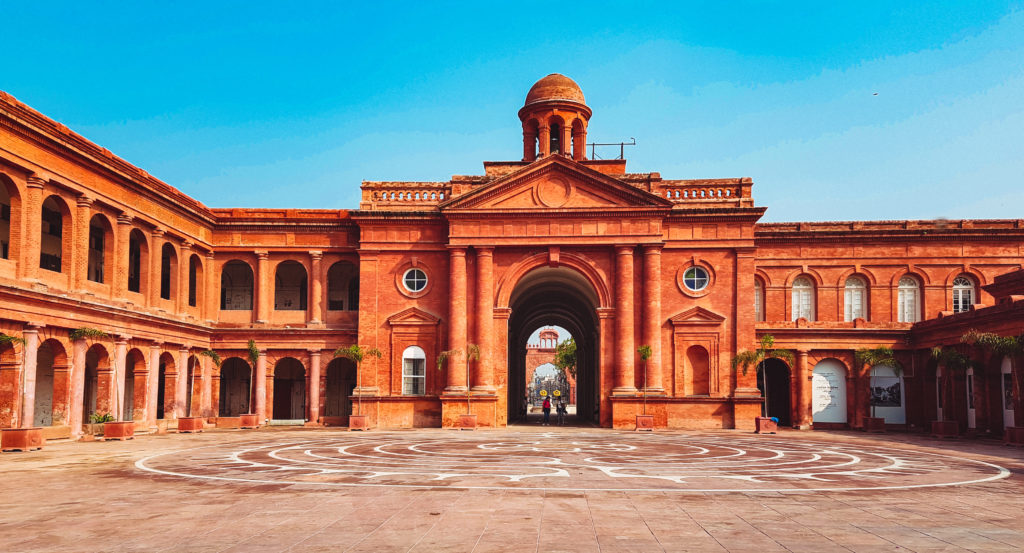
Image: The Town Hall Building, Amritsar houses the Partition Museum
The Partition of India was one of the most defining events in the Indian subcontinent’s history. Estimates suggest that up to 18 million people lost their homes and up to 2 million people lost their lives. The Partition Museum is the world’s first Museum dedicated to the Partition of 1947. It is a People’s Museum that aims to tell the stories of the millions impacted through oral histories, refugee artefacts, personal artefacts, letters, photographs and original documents from that time.
Housed in the historic Town Hall building in Amritsar, the Museum is located at the beginning of the heritage street in Amritsar, a 5-minute walk from the Golden Temple. The Partition Museum opened on 17 August 2017, marking the day as Partition Remembrance Day, as it was on 17 August 1947 that the actual boundaries of India and Pakistan were announced.
Here are some of the highlights from our collection!
Textile Labels from Amritsar | Courtesy: Partition Museum
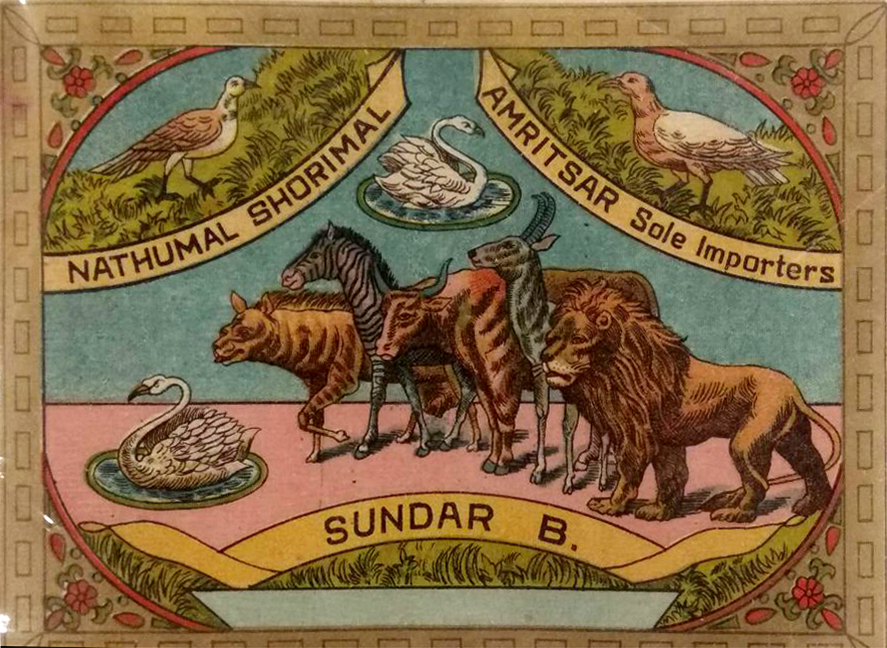
Textile Labels were once used as markers of a vibrant trade between India and Britain. Commonly known as ‘shipper’s tickets’, these catchy chromolithographs (a coloured picture printed by lithography in the late 19th-early 20th centuries) were attached on the front of a bolt of cloth during shipment for the purposes of immediate brand recognition and information.
Now a collectable item, these textile labels are a great source on historical trade routes, systems and businesses. During the colonial period, Bombay, Calcutta, and Amritsar rose as prominent trading centres for the textile industry. In Amritsar, it was the Hall Bazaar near Town Hall, that became the main market for textile trading. From here, goods were sent as far as Kashmir, Afghanistan and Central Asia.
These textile labels are part of our gallery, Why Amritsar, which charts the history of Amritsar, its significance before the Partition and why Amritsar was chosen as the location for the world’s first Partition Museum.
Muraqqa-i-Chugtai | Courtesy: Partition Museum
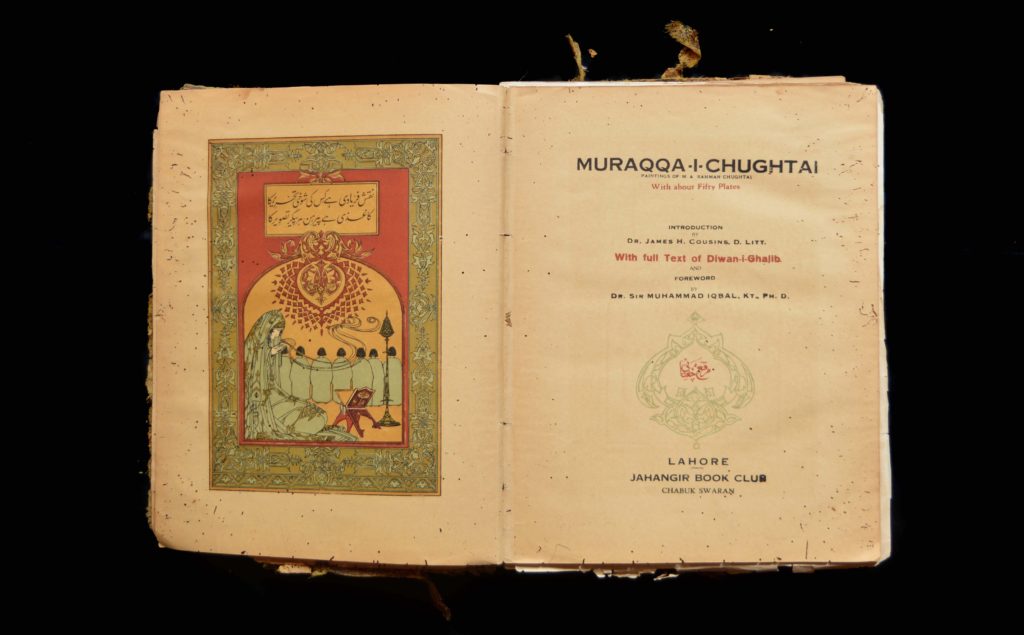
When Basant Kishan Khanna and his wife, Leelavati, fled their Lahore home with their children on 14 August 1947, they assumed they would return soon. They carried little. This Muraqqa-i-Chughtai, Leelavati’s most cherished book, is one of the few memories of the life left behind. The Muraqqa-i-Chughtai is a book printed in Lahore in the 1920s with paintings by Abdur Rehman Chughtai and the full text of the Diwan-i-Ghalib. Generously loaned by Rajni and Padam Rosha.
Tin Box | Courtesy: Partition Museum
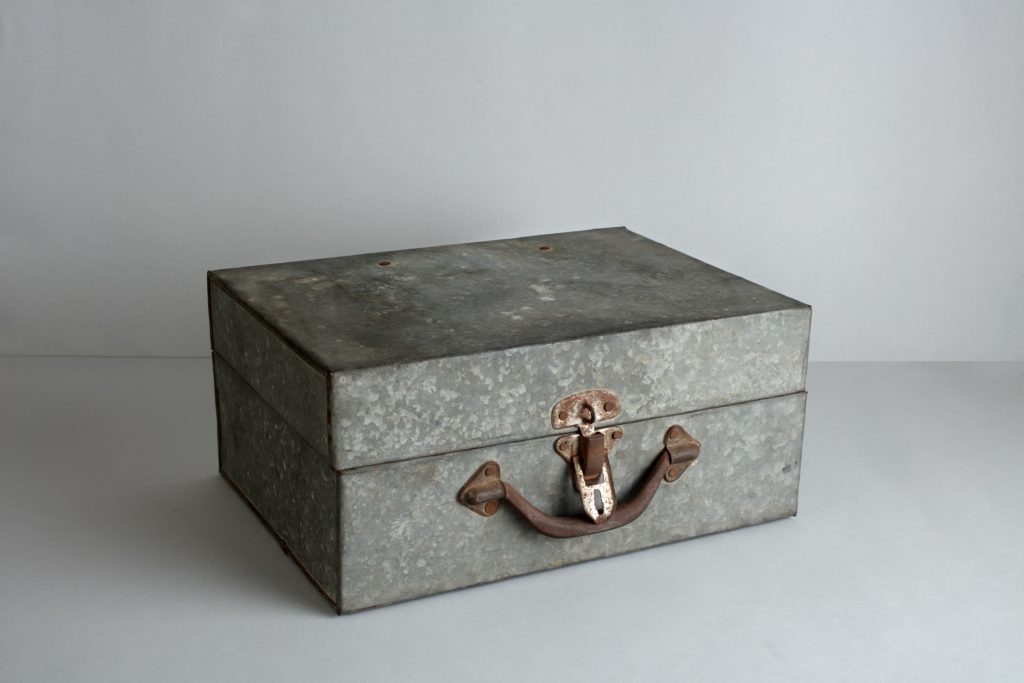
Sudershana Kumari was 8 years old during Partition. Her family was displaced from their home due to the riots, and barely escaped with their lives. While waiting at a camp for an army truck to take them across the border, she found this tin box in the ruins of a broken-down house. She thought of the dolls that she had left behind in Sheikhupura, and decided to take the box to keep her new dolls that she would collect in her new house. Generously donated by Sudershana Kumari.
Tiger Embroidery | Courtesy: Partition Museum
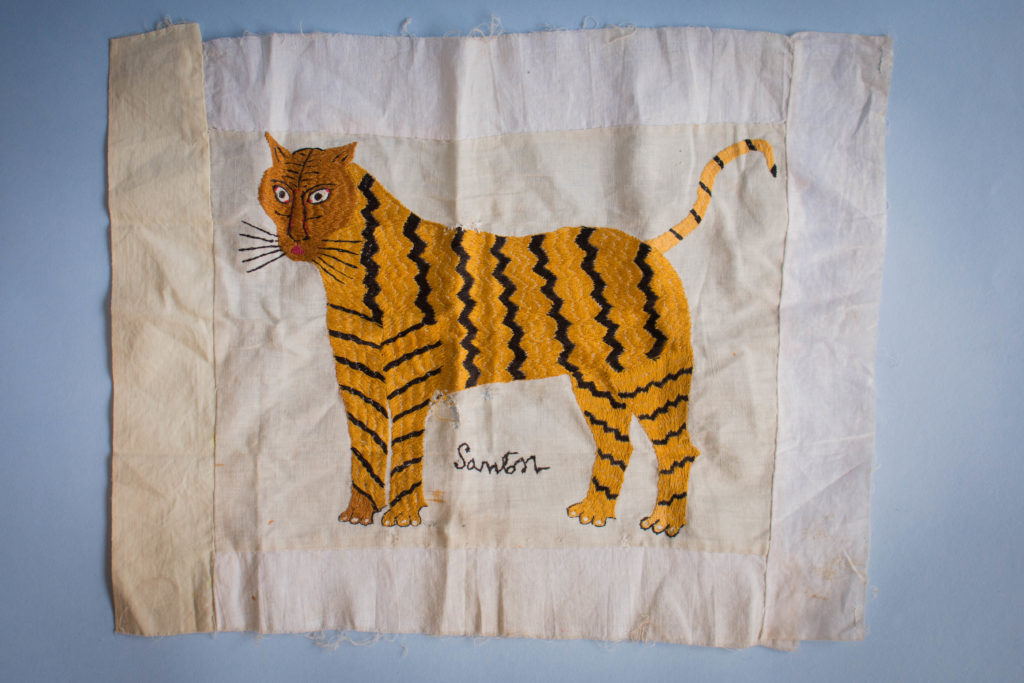
Santosh was extremely fond of embroidery and embroidered this cloth in her house in Tetulia in East Pakistan (now Bangladesh). It was brought across when the family migrated to escape the riots and killings, in 1948.
The royal Bengal Tiger is found mostly in the Sunderbans, the largest delta in the world. The marshy lands formed by the Ganga and the Brahmaputra flowing into the Bay of Bengal are shared between India and Bangladesh. While Bengal was divided during the Partition in 1947, the tiger has shared cultural importance, being the national animal for both the countries. Generously donated by Santosh’s brother, Jitendra Mohan Dutta.
Stamps | Courtesy: Partition Museum
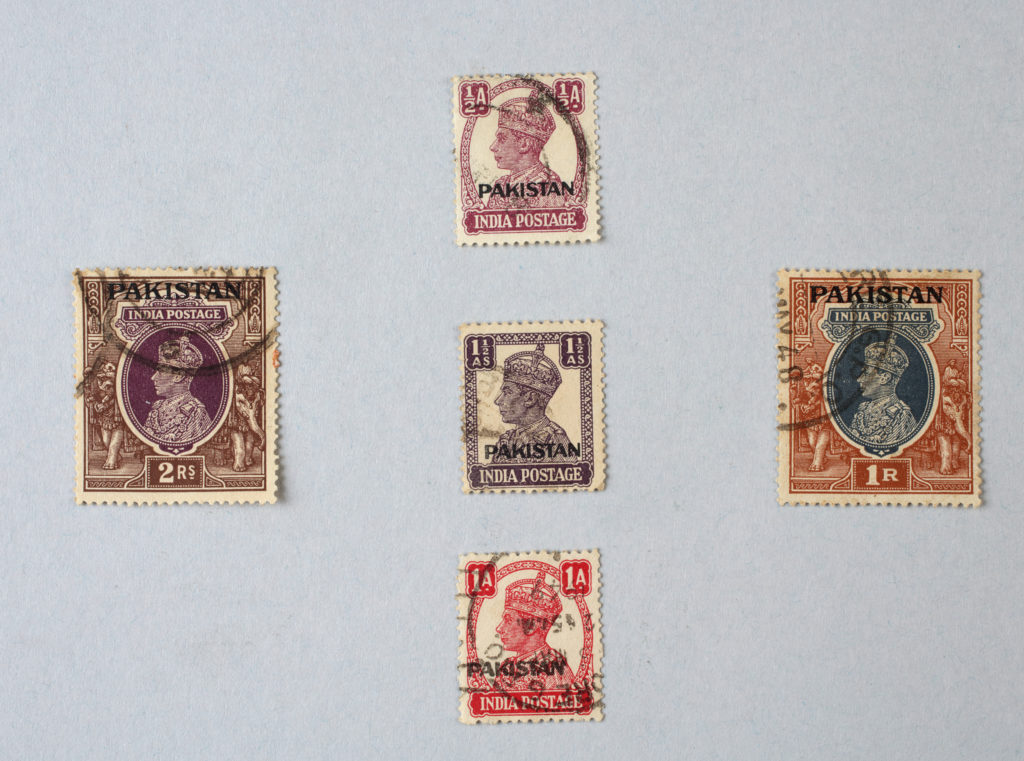
These stamps from 1947 signify the end of an Empire and the creation of two nations.
The George VI series of Indian stamps, printed in Nashik, Maharashtra, bearing the portrait of King George VI, continued to be used in India and Pakistan for some months following Independence. India released its first post-Independence series of stamps on November 21, 1947 bearing an image of the tricolour and the words ‘Jai Hind’. In Pakistan, as the new country worked to set up its systems, with delays in transit due to violence and lack of facilities, the George VI ‘India Postage’ stamps were overprinted with the name ‘Pakistan’. It was in the following year, in July 1948, that the first set of Pakistan’s independence series were printed and circulated.
Ijaz Khan interview | Interviewed by Ganeev Dhillon for the Partition Museum
Ijaz Khan describes the experience of his father and other members of his family when they went back to their home in Jalandhar a few years after Partition. He says the warmth and love with which they were received by their Hindu friends and neighbours was overwhelming
Writer info: Shivani Gandhi is an Outreach Associate at the Partition Museum and can be reached at shivani@partitionmuseum.org.
Would your museum like to be part of this monthly initiative? Please send us images and a brief description of five objects from your collection that the public and our readers should know more about. Write to info@rereeti.org.







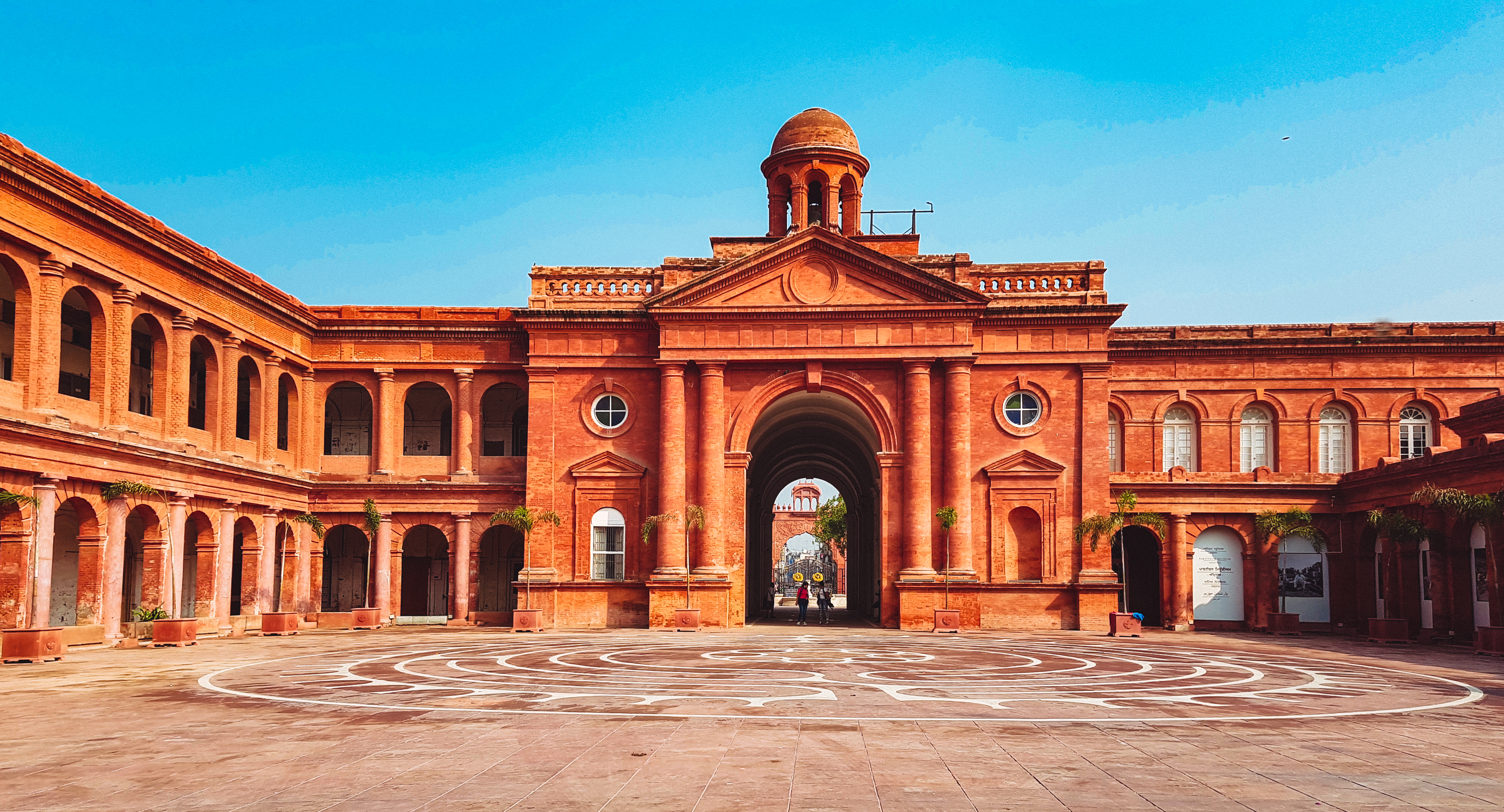
Recent Comments